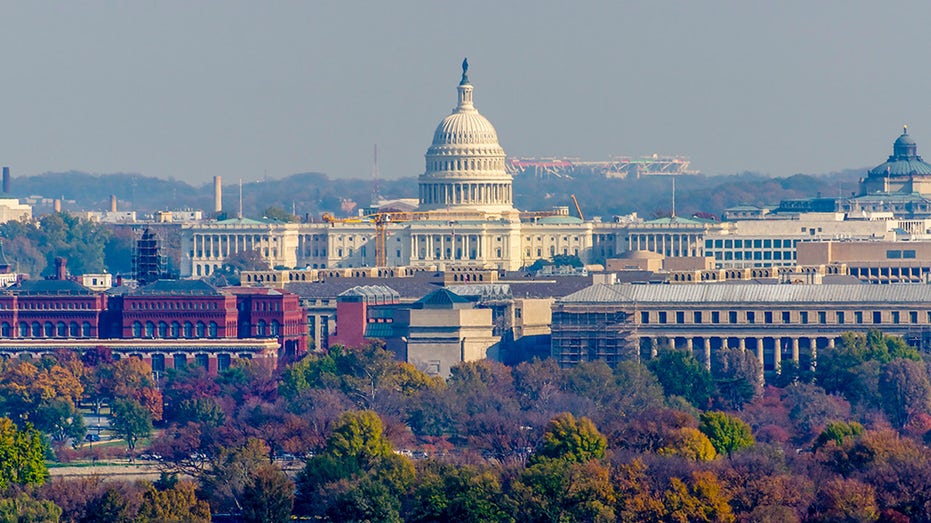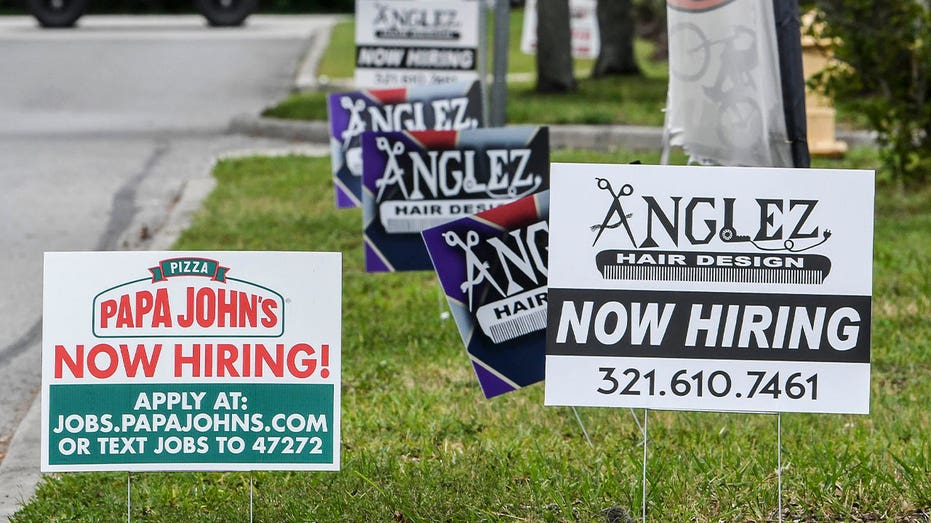Government assistance policies leading to massive workforce exodus: study
Labor force participation drop over past few decades attributed to government programs
Goldman Sachs' Duran on 'major spikes' causing tension in economy
Goldman Sachs Personal Financial Management Head Joe Duran argues the U.S. needs 'years of inflation for it to persist.'
EXCLUSIVE: Government programs and policies are exacerbating a decadeslong workforce exodus, with Americans becoming increasingly disconnected from the job market, according to a new analysis published Wednesday by the Joint Economic Committee Republicans.
The study, shared exclusively with FOX Business, found the U.S. is experiencing an unprecedented rise in prime-age workers who are voluntarily leaving the labor force. For men, the trend dates back 50 years, with the labor force participation rate among males dropping from more than 97% in 1955 to 89% before the COVID-19 pandemic; for women, receding workforce participation began in the last two decades.
"As the number of Americans who receive government assistance has grown, more Americans have voluntarily left their jobs," Sen. Mike Lee, the ranking member of the JEC Republicans, said in a statement. "Congress’ plan to spend an additional $3.5 trillion to provide households with new subsidies and fewer incentives to work would only make things worse."

The United States Capitol seen from Arlington National Cemetery in Washington, D.C. (iStock)
The decline in prime-age labor force participation has been mostly voluntary: Just 12% of unemployed men who are prime-age and able-bodied said they wanted a job or were open to work. At the same time, among men who are not working for reasons other than disability, retirement, education or homemaking, 41% personally received government assistance.
"Government policies may be tipping the scales away from work," the analysis said. "A growing number of Americans receive government assistance, which has been shown to lower employment."
What's more, a growing number of Americans in general receive government assistance, even though economic conditions were improving prior to the pandemic, the study shows. For instance, the share of working-age Americans living in households between the 20th and 50th income percentiles who benefit from government programs increased from 20% to about 30% between 1998 and 2014.
KEY HOUSE DEMOCRAT SKEPTICAL OF NEW SENATE BILLIONAIRE TAX
"This growth in safety net benefits likely makes non-work more attractive and has contributed to declining labor force participation," the report said.
Empirical evidence suggests that government money, particularly those without work requirements, tends to lower employment. Labor force participation and earnings fall after individuals receive housing assistance, while losing Medicaid coverage increases employment – but gaining the coverage can reduce it. The introduction of food stamp programs in the 1960s and 1970s also decreased employment significantly.
The JEC Republicans suggested policymakers could help reconnect Americans to work by removing financial disincentives and lifting barriers through occupational licensing reform, better-targeted non-compete agreements and the reintegration of previously incarcerated individuals, among other steps.

Faustino (R), who is currently unemployed, waits in a socially distanced line to enter a bookkeeping shop near the U.S.-Mexico border in Imperial County, which has been hard-hit by the COVID-19 pandemic, on July 24, 2020 in Calexico, California. (Photo by Mario Tama/Getty Images)
The analysis also proposes that Congress should look at "disincentives to work" in social-safety net programs like Medicaid, Social Security Disability Insurance, Supplementary Security Income, unemployment benefits and food stamps (known as the Supplemental Nutrition Assistance Program, or SNAP).
Although the study mostly encompasses the period of time prior to the pandemic and before Congress passed three massive stimulus packages, it sheds light on an ongoing and worsening labor shortage. Recent Labor Department data published in October revealed that were an estimated 10.4 million open jobs at the end of August. Though a slight decline from a record number of openings in July, it's still a staggeringly high figure; there are some 2.7 million more open jobs than Americans looking for work – or roughly 1.35 jobs per unemployed person.
PELOSI PROMISES DEMS WILL PASS SPENDING BILL 'SOON' AMID INTERNAL FIGHTING
The number was exacerbated by a record 4.3 million people who quit their jobs in August, representing about 2.9% of the country's workforce, according to the Job Openings and Labor Turnover Survey (JOLTS) report. The data was released just a few days after the government's September jobs report, which revealed nonfarm payrolls increased by just 194,000 last month, well below the 500,000 expected by Refinitiv economists.
There are still about 5 million fewer jobs than there were in February 2020, before the virus shut down broad swaths of the nation's economy.

Papa John's Pizza and Anglez Hair Design on N. Wickham Rd. have multiple signs around the businesses looking for employees. Help wanted signs are springing up all over as businesses gear up for the first post-COVID summer season. (Craig Bailey/FLORIDA TODAY via USA TODAY NETWORK)
The study comes as Democrats in Congress push forward with another economic spending bill that could inject as much as $1.9 trillion into the nation's economy over the next decade. Though specifics of the measure are still being hashed out, it's expected to expand the child tax credit, guarantee pre-kindergarten for all three- and four-year-olds, provide additional funding for reinforcing the Affordable Care Act and build more affordable housing.
Beyond the broader economic impact, the job-hunt inertia plays a vital role in personal well-being; employment is an important source of social capital that provides both material and immaterial benefits to individuals and their communities. Prime-age men who are not a part of the workforce tend to be more socially isolated and less happy than working men, the analysis said, citing a previous JEC report from 2018 (titled "Inactive, Disconnected, and Ailing: A Portrait of Prime-Age Men Out of the Labor Force").
GET FOX BUSINESS ON THE GO BY CLICKING HERE
"Work is more than a source of income; it’s fundamental to our ability to contribute and thrive," Lee said. "Congress must stop making policy decisions that discourage a return to work—we need workers’ contributions now more than ever."





















